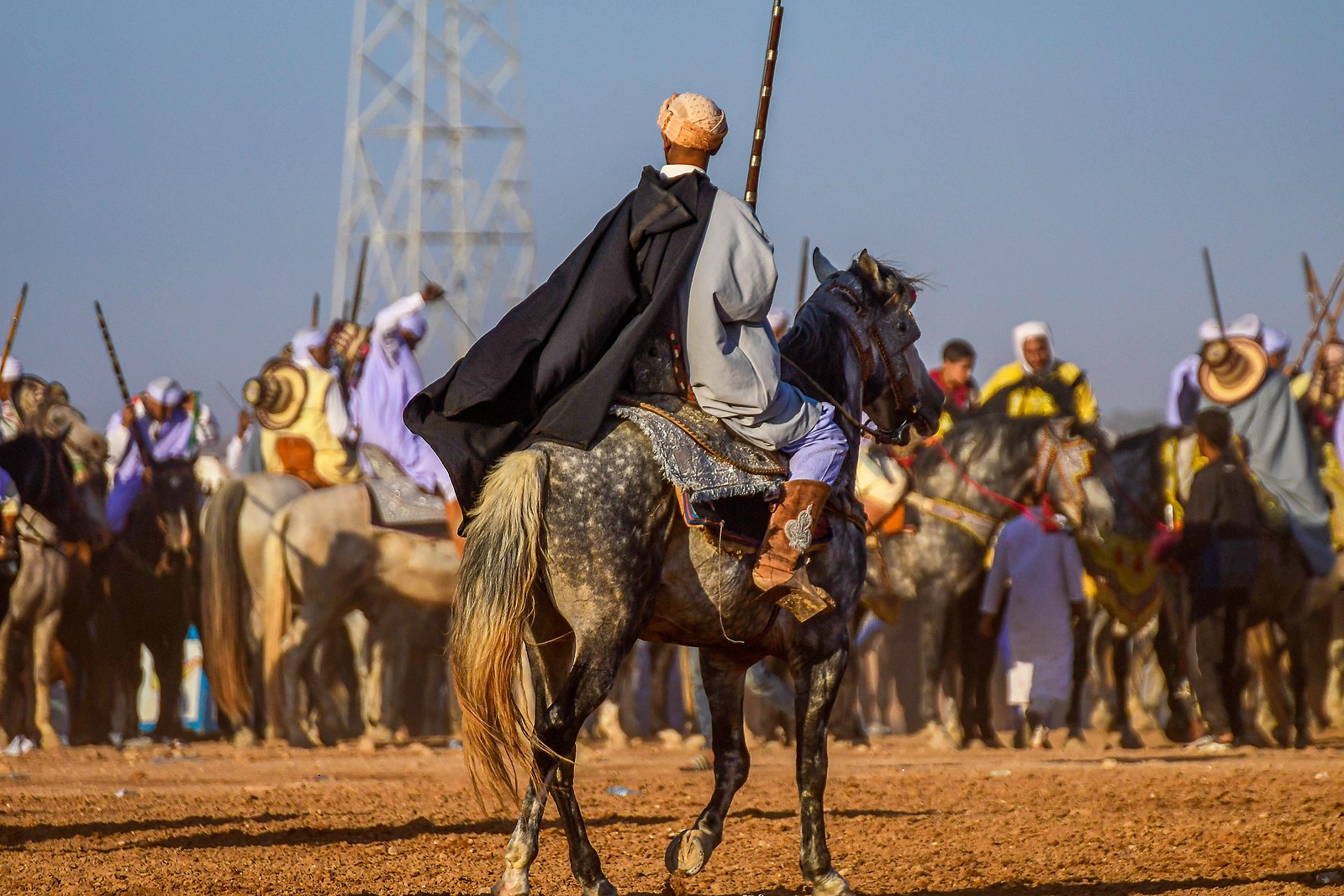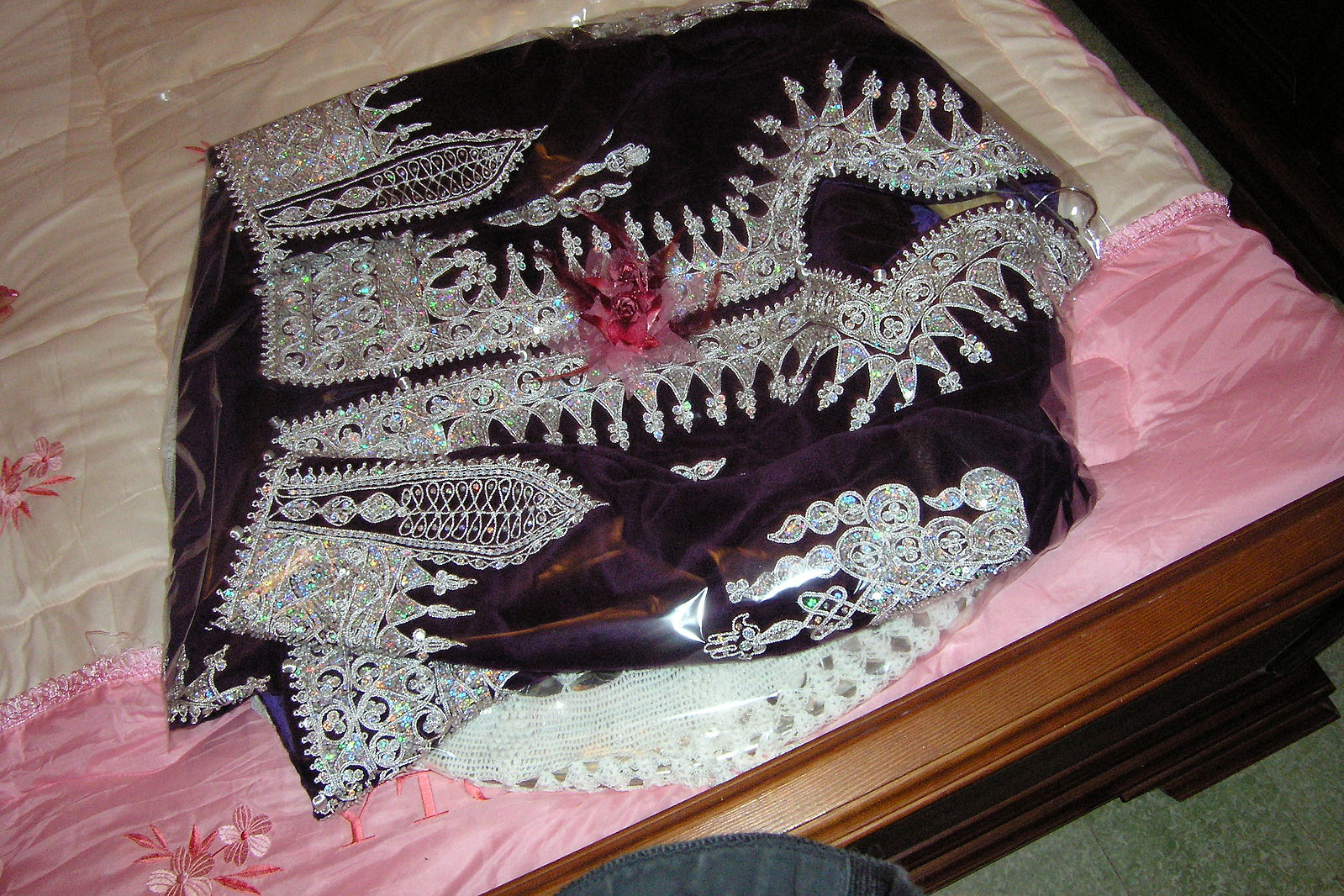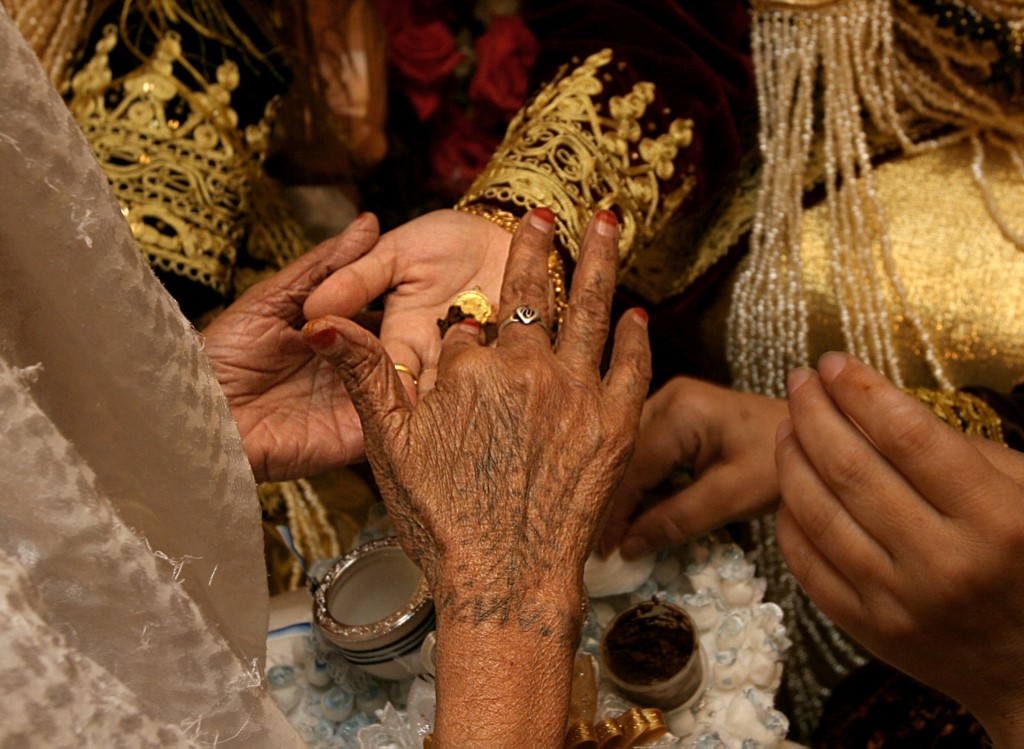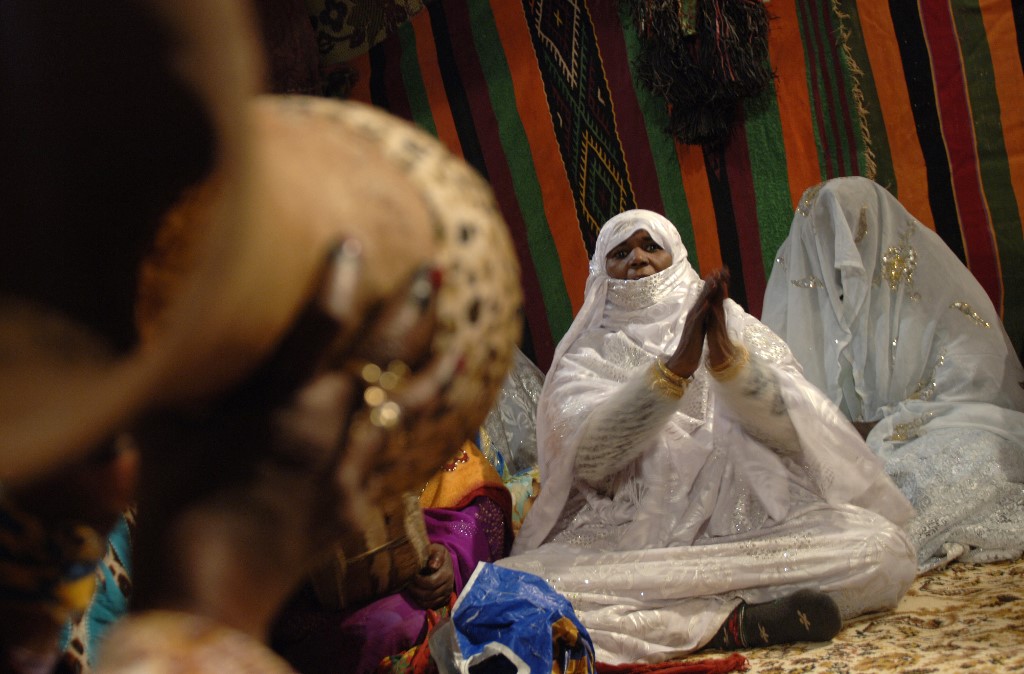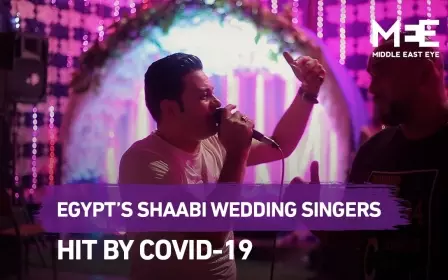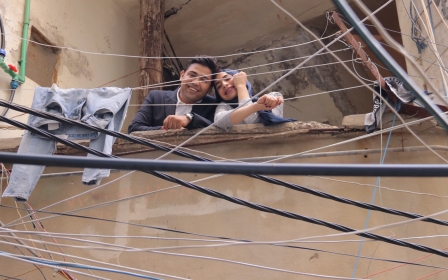Tasdira and tiaras: An inside look at Algerian weddings
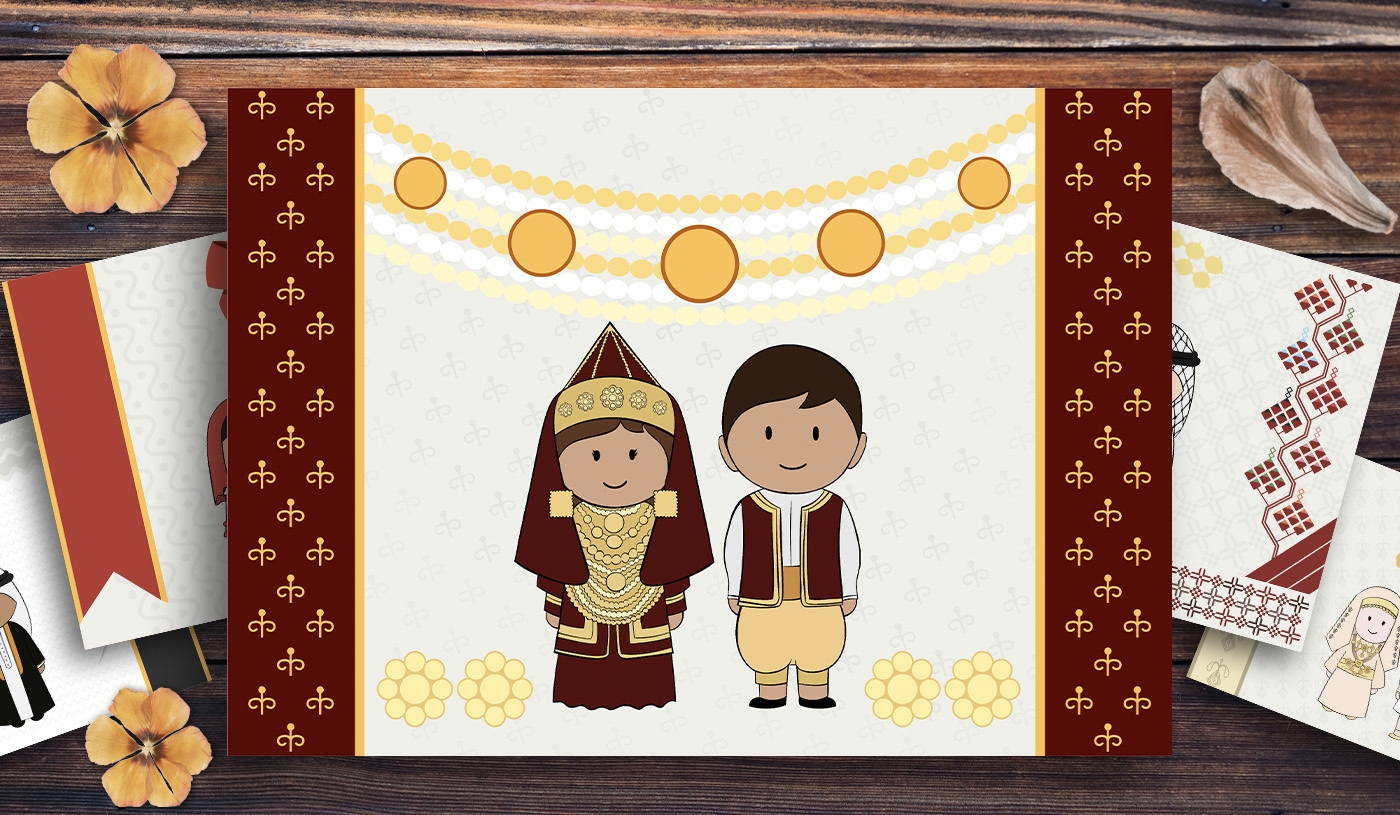
From the richly coloured jewels that adorn bridal outfits, to make-up that's carefully painted on the bride’s face to ward off the evil eye, many of the traditions witnessed at Algerian weddings have been inherited from the historical elite and royalty.
Today, wedding traditions vary across the country, with different regions putting their own twists on the occasion and the many ceremonies it entails.
Where one woman dons the shedda in Tlemcen, passed down from the princesses of the Zayyanid dynasty, a woman in Algiers sports a karaku adopted from the upper echelons of Ottoman society. The conical hat, which is what the shedda costume is named after, is replaced by the flat sheshiya hat in the capital.
Despite the nuances, there are still several elements that are common throughout the country which form a classic Algerian wedding. After a woman agrees to a proposal and accepts the dowry, the party can finally begin.
Here, Middle East Eye takes you through a typical Algerian wedding as part of a series on wedding traditions from around the region. Stay tuned for the next part, which will be published next week.
New MEE newsletter: Jerusalem Dispatch
Sign up to get the latest insights and analysis on Israel-Palestine, alongside Turkey Unpacked and other MEE newsletters
Hammam and Henna
The hammam, or thermal bath, is almost sacred when it comes to preparing for an Algerian wedding. The ritual symbolises purification of the body, and encapsulates virtues of fertility and positive spirits.
Regardless of a person's background, this stage of wedding preparation is an important part of mental and physical cleansing.
Here, the bride-to-be will be bathed and exfoliated with the highest quality soaps, oils, her hair doused in nourishing ingredients and wrapped up. This is a day of opulence and relaxation before the wedding, reserved mainly for the bride and her closest circle.
Likewise, the henna night is just as intimate and allows the bride to mark the happy occasion with those closest to her, before the public wedding procession starts.
At the henna night, dried and native grown plants from Gourara are pounded with a pestle, in the same mortar that date pits and perfumes are pummelled in. The powder is then mixed with water and carefully applied to the bride's hands and feet.
The ritual is seen as a blessing, with some believing the tradition stems back to the daughter of the Prophet Muhammad.
The grand escort
The wedding festivities begin in the bride’s neighbourhood. The elaborate display transporting the bride from her home to the venue or groom’s house symbolises the alliance between the two families and the start of a new chapter.
The milestone event will typically involve horses and camels; in certain parts of the country it is the groom who rides the horse as a rite of passage, and in others, such as in Kabylia, it’s the bride who arrives on hourseback.
One of the most exciting rituals performed during the escort is an equestrian art called fantasia. Here, professional horsemen mount steeds with extravagantly decked saddles and shoot rifles towards the sky.
The skilful horsemanship fuses cultural performance with martial arts, and is carried out in other parts of the region too, such as in Libya, Tunisia and Mauritania.
Fantasia stems back to Arab-Amazigh tribes in the 17th century when it was used in cavalry raids and celebrations. The art is also practicsed in Morocco.
Some brides are propped up on the hump of a camel, sitting majestically in an intricately designed palanquin, waving to well-wishers and friends and family.
In almost every region, the bride is concealed from head to toe by a veil during the escort. The loose garment and accompanying veil for the face is called a hayek. The hayek is typically a light cream or white colour, but in Bou Saada it is typically a light periwinkle, in Laghouat a crimson blue and in Oued Souf, it’s dotted with maroon.
In northern Algeria, the groom will wear a burnus, a long, brown cloak made from wool, with a hood long enough to cover the face.
The bride will also typically wear a mendil, a scarf that cascades down her body to be later drawn back by her husband-to-be. This intimate moment usually happens privately rather than in front of wedding guests.
Music is a key part of the procession, adding to the ambience and joyful atmosphere. Oboe and tambourine players follow the couple, a tradition called hadwa. Today, most contemporary weddings will continue the procession in a cortege, where the bride will go into a decorated vehicle followed by friends in their cars trailing behind, beeping and cheering along.
Tasdira and tiaras
If there’s one way to describe Algerian wedding outfits, it's regal. Wedding costumes, such as the gandura fergani or qaftan al-qadi, are known for their lavish gold embroidery stitched into velvet. Gold silk is also popular amongst newlyweds in cities such as Tlemcen, Algiers, Constantine and Annaba.
One of the most prized possessions for an Algerian bride on her big day is the trousseau, a package containing all of her jewels and outfit changes, of which there are up to seven. The nuptial goods are considered to be part of the dowry (mahr), and combined, amounts to a great investment and are seen as financial security.
The rotation of outfits is called the tasdira, with the bride showcasing iconic outfits which pay homage to their city, ancestral background and heritage. Some of the outfits may even be inspired by the groom’s culture.
In the cities of Tlemcen and Mostaghanem, some brides will wear a cloth, called a futa, wrapped around their waist which has a unique colour and design to it. When the bride is adorned with her new clothes, a ball of henna, a natural dye associated with celebrations, is placed in the centre of her palm, leaving a vibrant rust-toned mark in its place.
When it comes to jewellery, less is not always more. In Tlemcen, several rows of pearl necklaces will cover the entire chest of the bride, which can be heavy. In cities such as Tamanrasset, large triangular pendants serve as the ultimate centrepiece.
In traditional Algerian weddings, gold has typically been associated with urban dwellers, whereas silver is related to more nomadic societies and people living in rural environments.
The outfit changes are not limited to the bride, as the close relatives will also don several outfits.
The groom, though typically not having as many outfit changes as the bride, wears the highest quality fabrics. Usually, the jellaba worn by the groom will be an off-white or faint yellow colour. In the city of Djanet, men choose to wear a white bazin, with an indigo-layered turban.
Today, the influence of other cultures can be witnessed in clothing choices. Some are choosing to incorporate tuxedos into their wedding looks, combining it with more traditional elements.
Wedding delicacies
At Algerian weddings, food is made to be shared. After the ornate and somewhat exhausting procession, family and friends will gather around a chicken bastilla, a stuffed pie dish couched in toasted almonds.
Couscous is also a quintessential wedding celebration dish, which is lovingly prepared by a group of women close to the bride. The dish is often accompanied by a hearty stew, which varies depending on the region.
Melodies and movement
Folk songs feature heavily at Algerian weddings, with seasoned instrument players being invited to take part in the festivities.
Women will gently wave a handkerchief to the background sound of oud instrumentals and Andalusian music. A style of melodic poetry called malhun has also made its way across regions in Algeria, despite being associated with the major cities.
Chants and dances are passed down from generation to generation, one of the most famous being the rahaba, a dance that requires paced thumps of a drum and lines belted out from memory.
The songs that are chanted often celebrate the newlywed couple, wish them well, and praise the Prophet Muhammad. Many of the songs have Arabic or Amazigh roots, which families make a special effort to commemorate on their big day.
In more modern weddings, some families will choose to bring a Rai singer, a popular type of music from the city of Oran, to perform at their wedding, while others will choose to have Arabic and Tuareg tunes blasting in the background.
A divine contract
While Algerian weddings can span several days and require weeks of laborious planning, it is also worth noting that some people will choose to have a more subdued wedding, simply signing the wedding contract before their immediate family.
Details of how a proper wedding should unfold are often the subject of passionate debate, but the traditions and rituals involved have been preserved for centuries, and hold particular significance for both the families and the culture.
Middle East Eye delivers independent and unrivalled coverage and analysis of the Middle East, North Africa and beyond. To learn more about republishing this content and the associated fees, please fill out this form. More about MEE can be found here.




